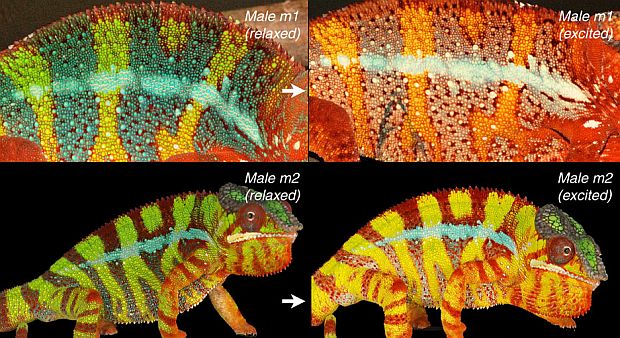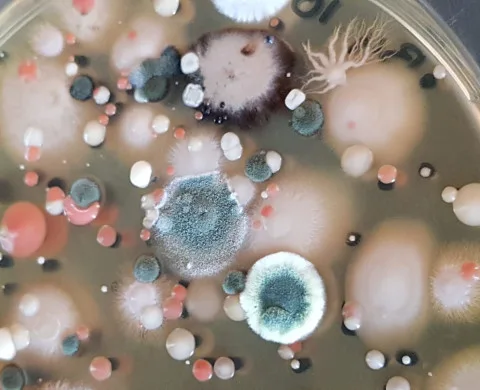It’s been quite some time now since researchers have been studying the reasons that causes the changing of colors among chameleons. The study concluded that floating nanocrystals constitutes one of the major ingredients present within a layer of skin cells. Generally, the micro crystals are uniformly situated all over the cell. Wavelength of the light that is being reflected from the cells is determined by the spacing within these nanocrystals.
Hence, the process of changing one color to another occurs at the cellular level. For instance, switching the shade from green to red is the result of altering spaces within the micro cellular crystals.
Camouflaging within minutes
After years of studying, researchers at the University of Geneva were able to crack the problem. The team was working on panther chameleon (Furcifer pardalis), the animal which displays the most impressive color in the chameleon kingdom.
When males face with competitor of the same gender or a receptive female, it not only switches its skin’s background color from green to yellow but also turns its blue patterning into white along with reflect the current red with brighter intensity. The entire process takes place within minutes of coming face to face with another male.
Altering the space between tiny crystals
With the help of spectroscopy, researchers discovered that within numerous layers of pigmented skin cells, these lizards possess iridophores. They are also pigment cells but are different from the others since they contain plates of crystalline chemochromes, which are made from guanine, and are responsible for reflecting light.
The guanine nanocrystals are stuffed in a lattice framework all through the cell and the spacing within these micro crystals is responsible for the cell’s color. During the calm temperament of the chameleon, the nanocrystals organize in a dense network, giving out a strong wavelength of blue color. When a lizard is in its excited state, it loses the tension of the lattice structure, thus giving out the reflection of yellow or red. The technique indicates compression and decompression of lattice structure.
Researchers claim that reasons for the crystals to behave such in terms of spacing could be due to the expansion and contraction of the cell. However, the team is still working on for verifying other probable reasons.
Source: [The Guardian], [Nature Communications]





